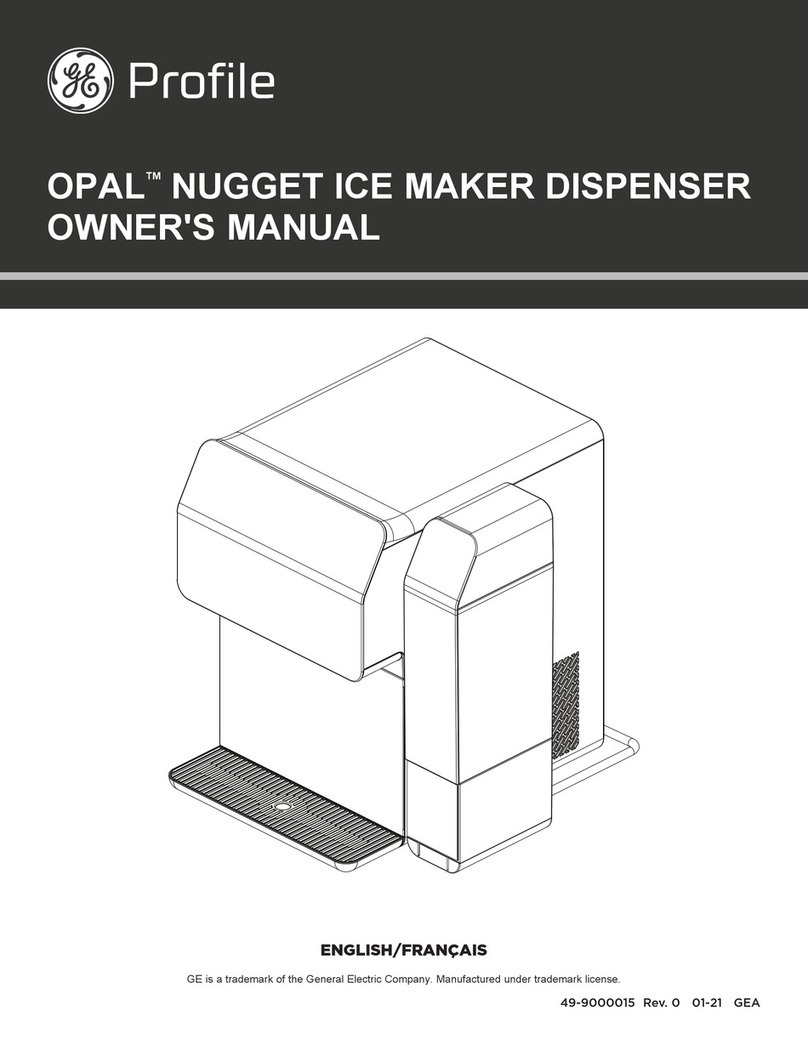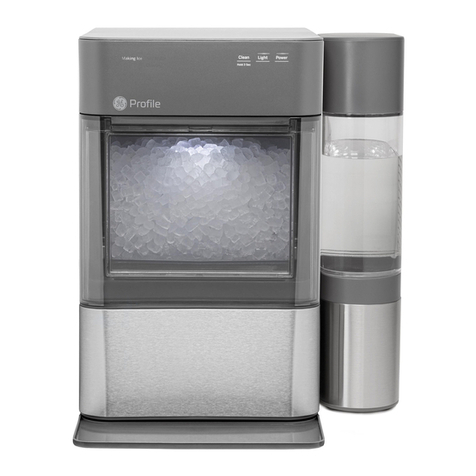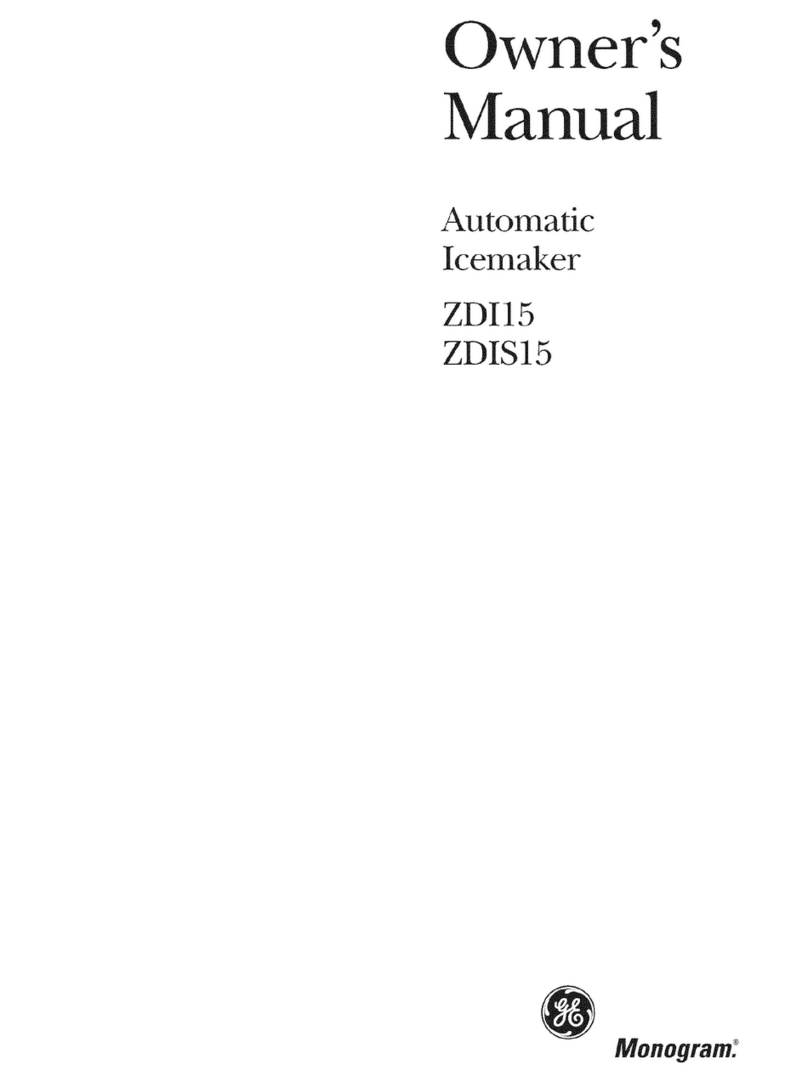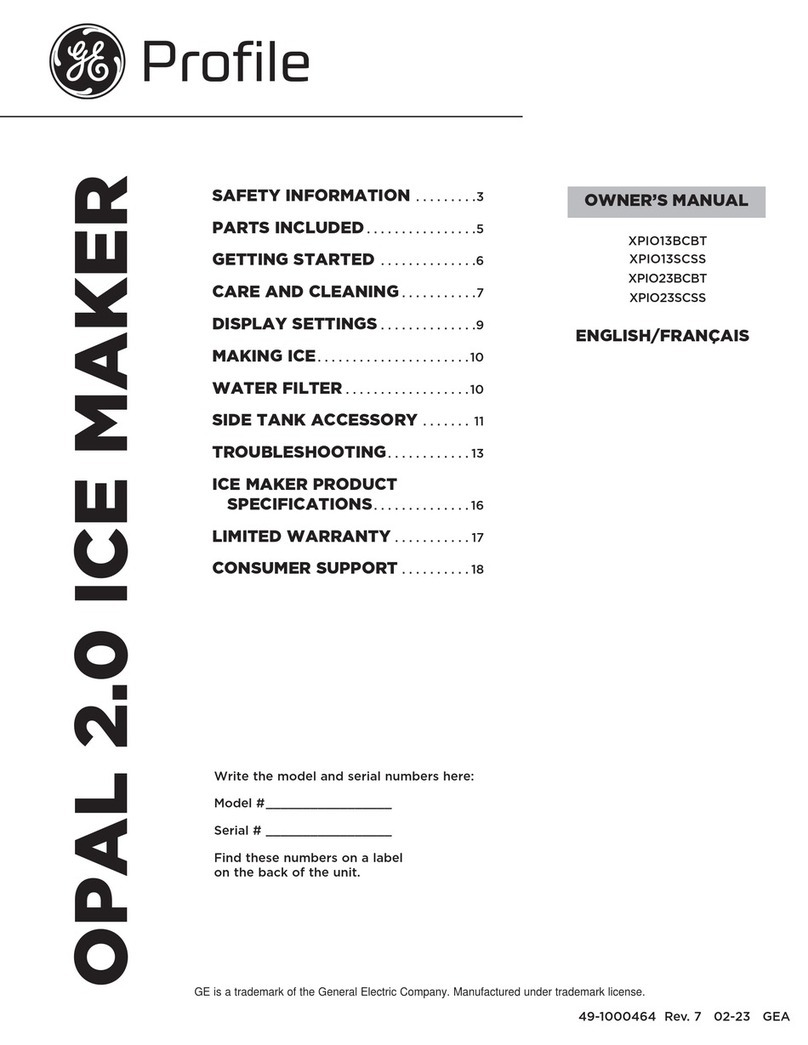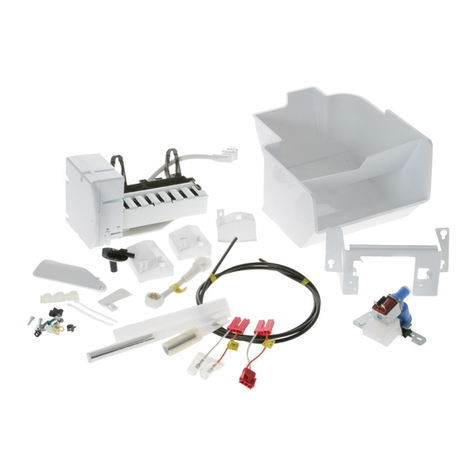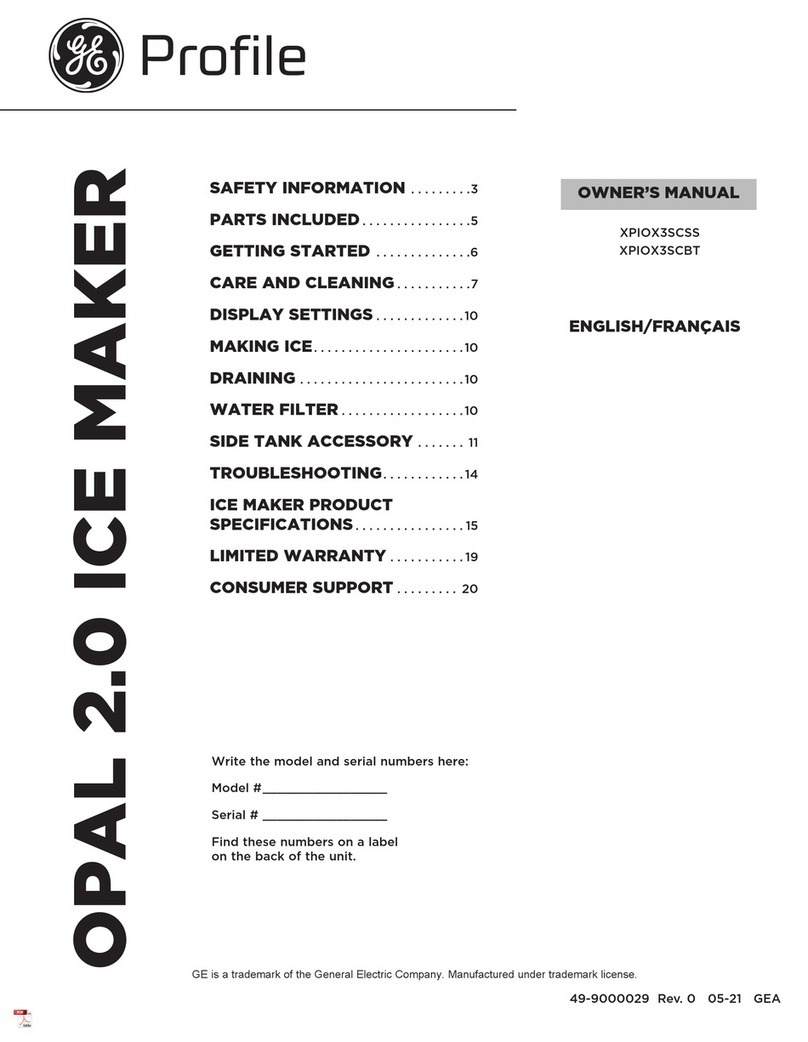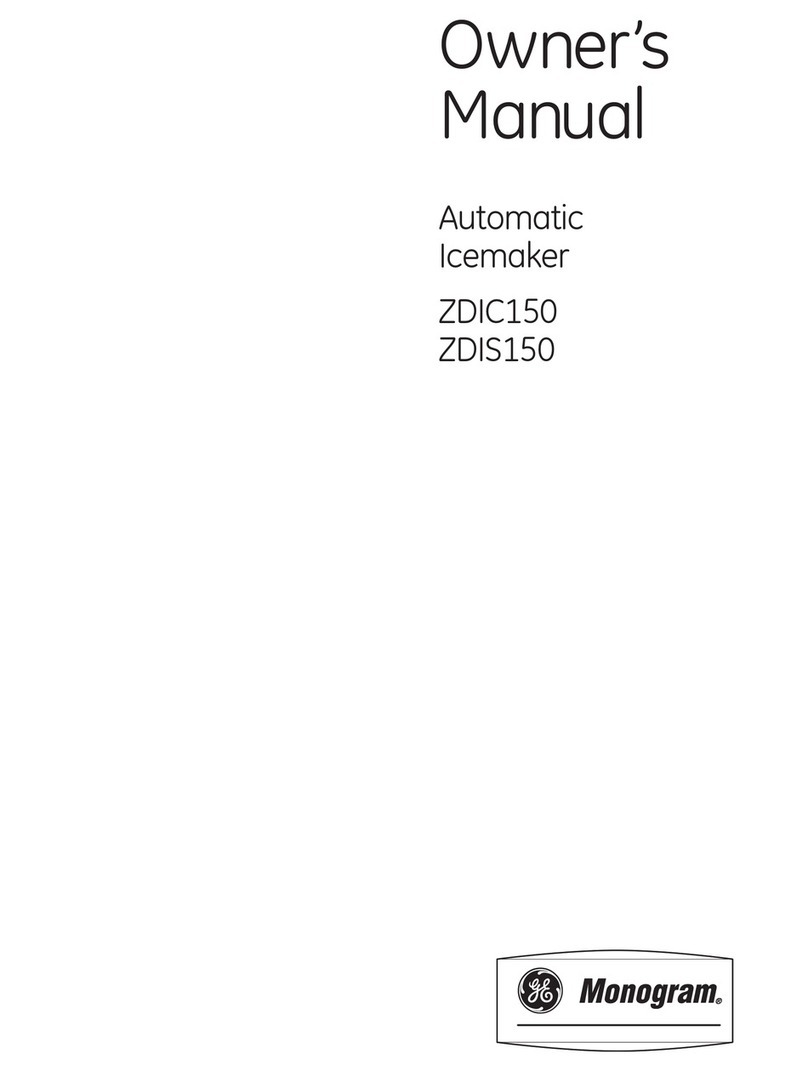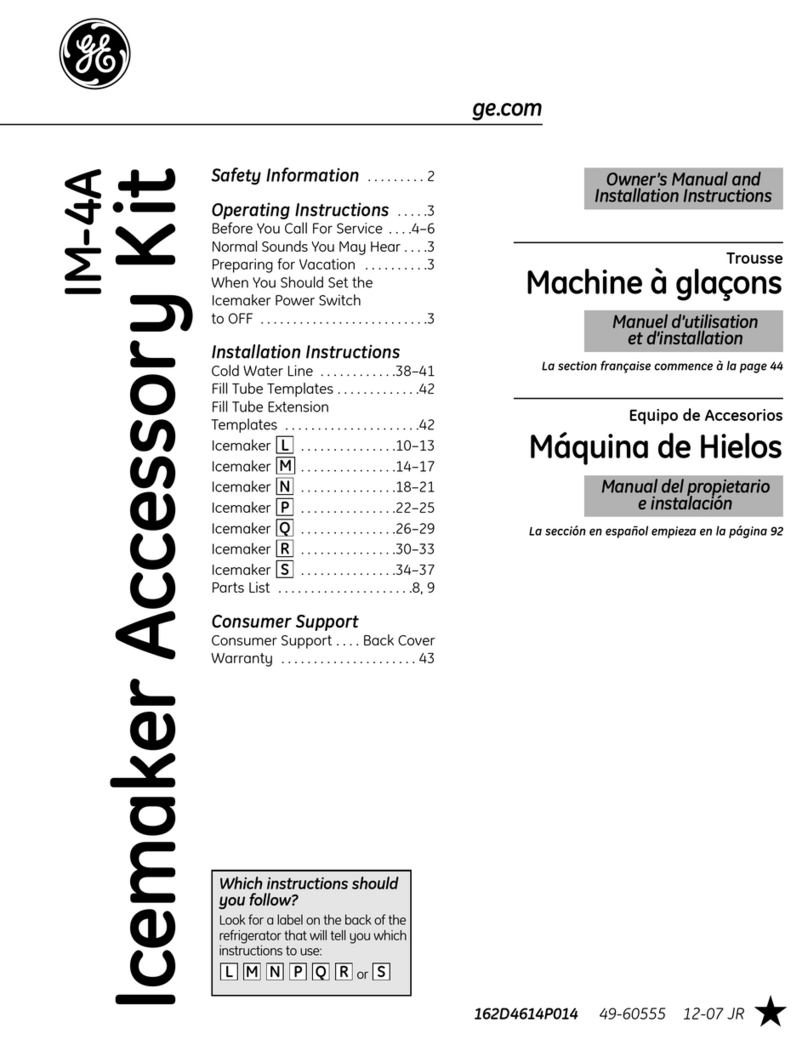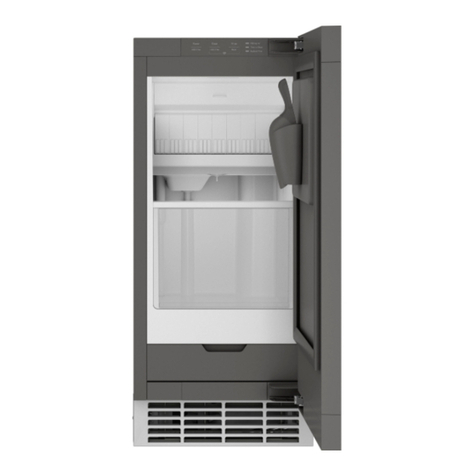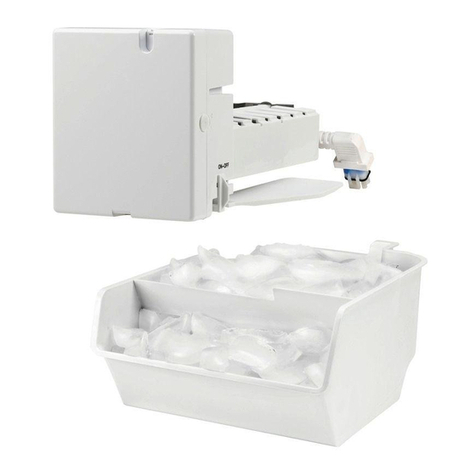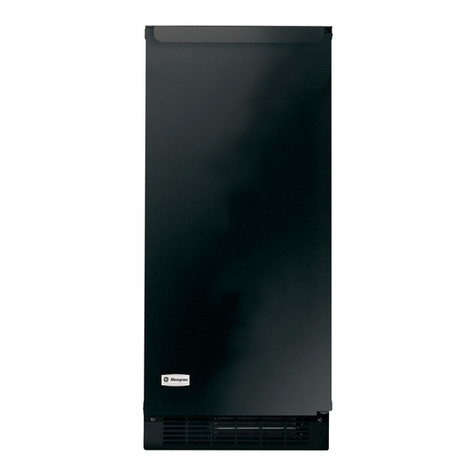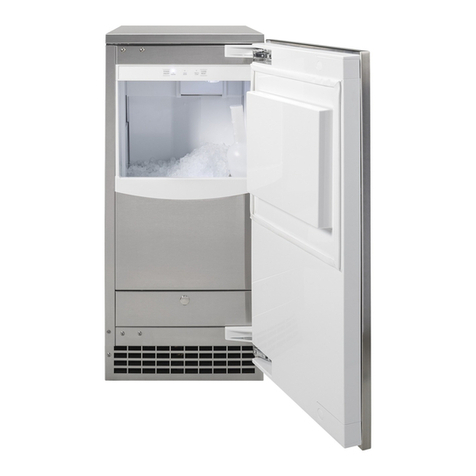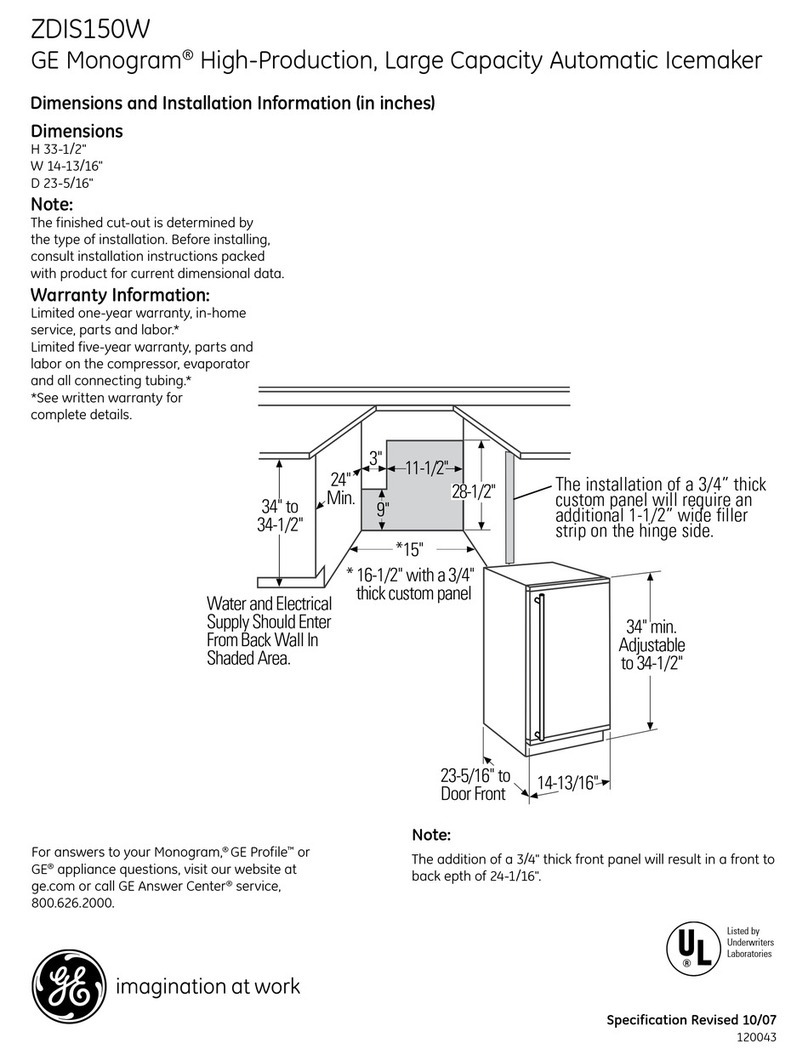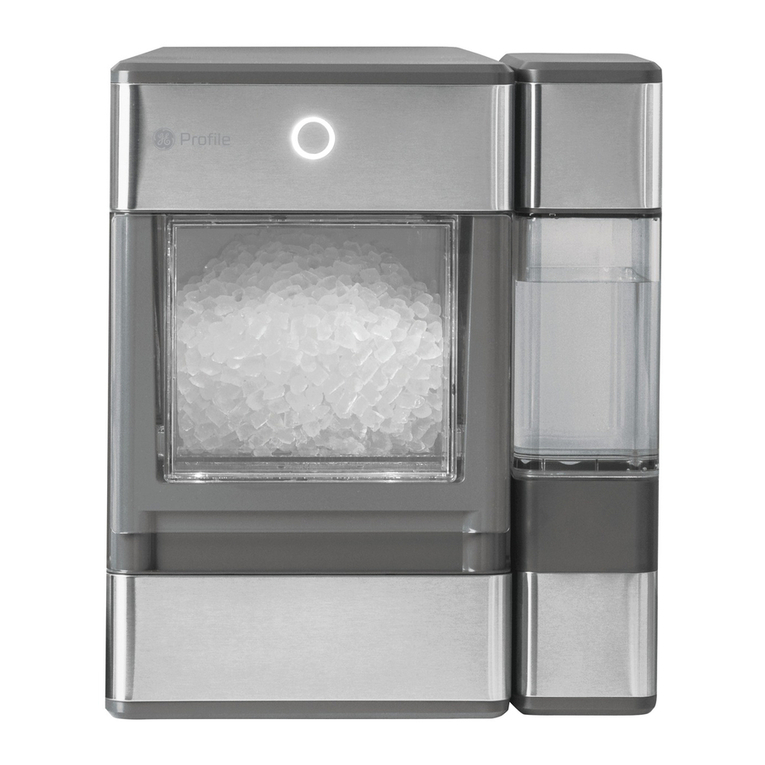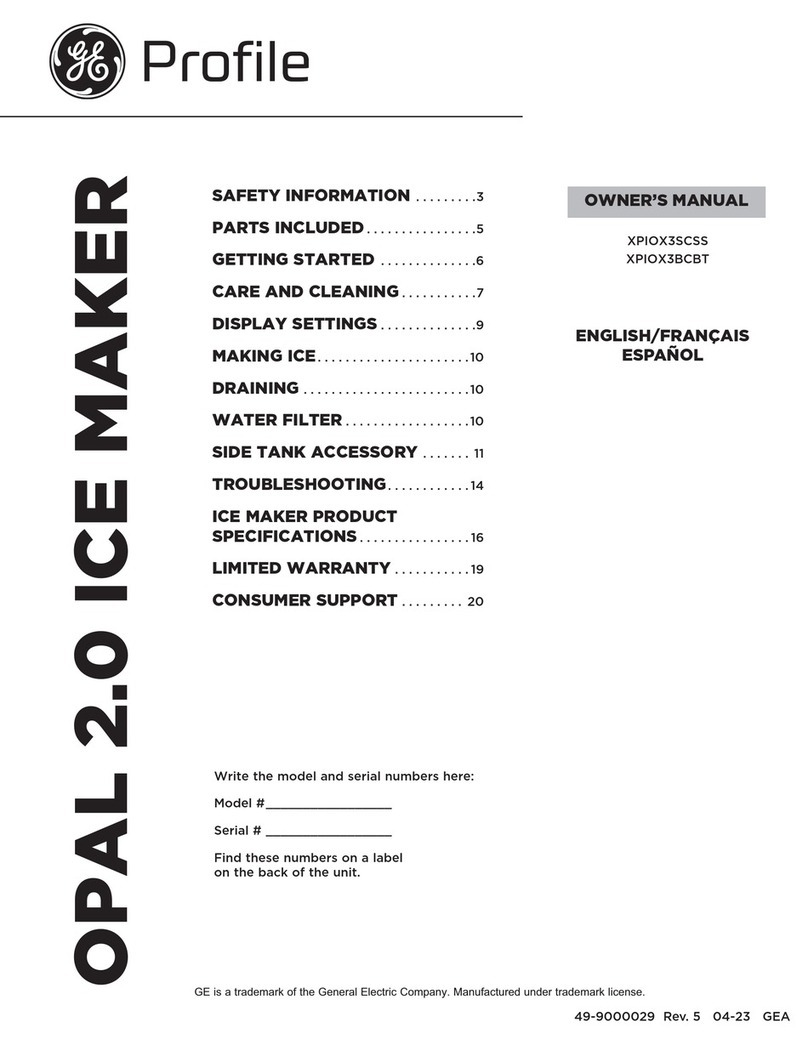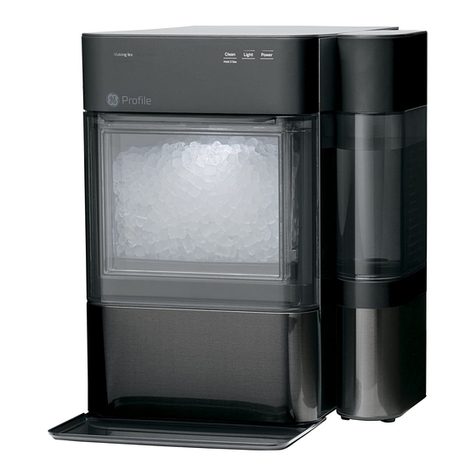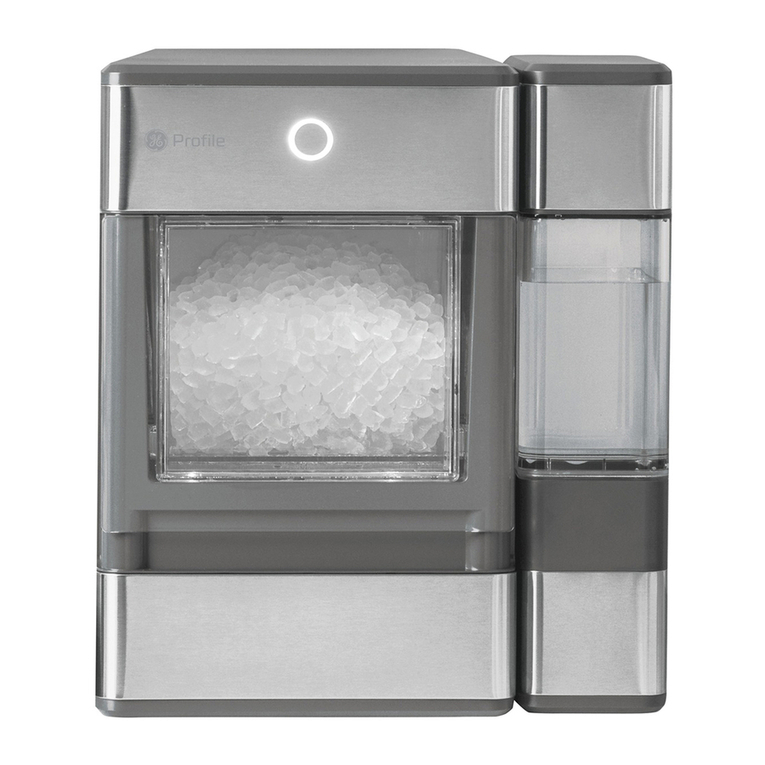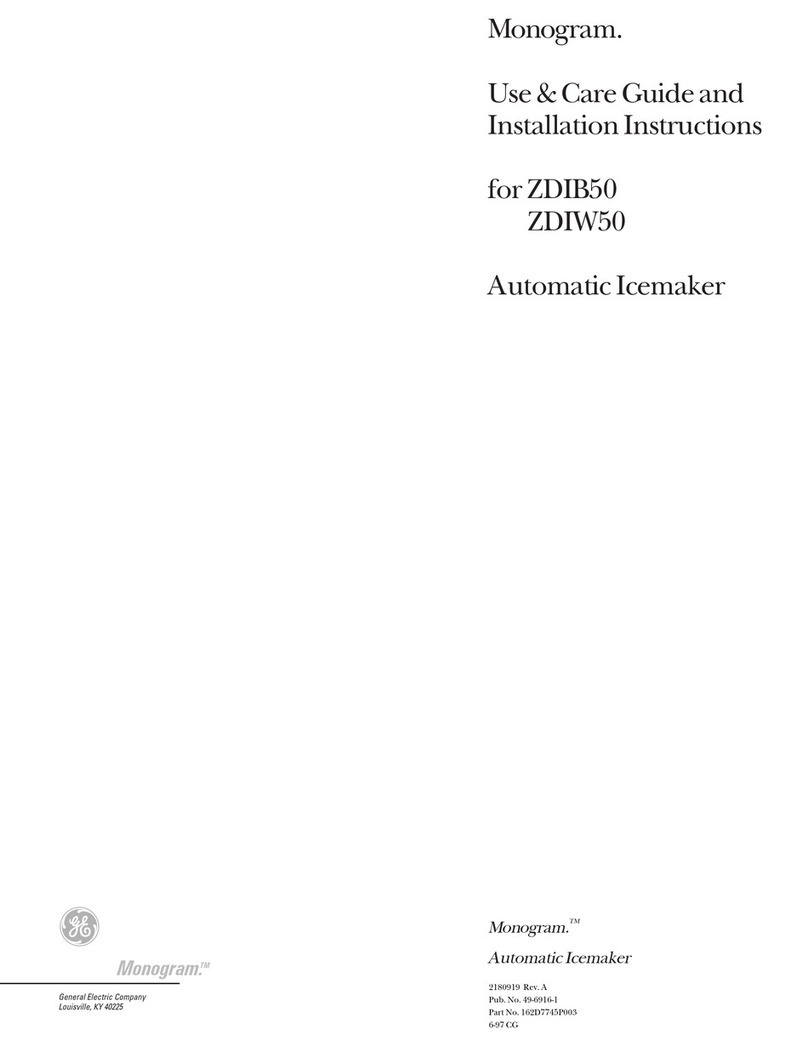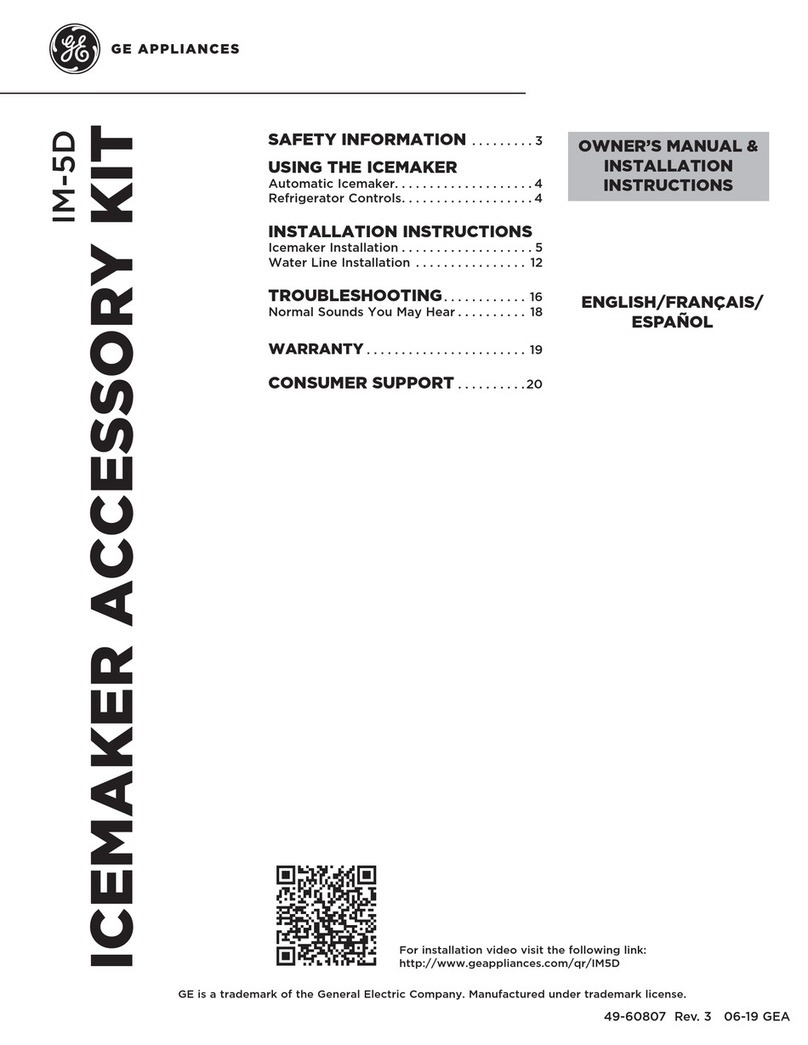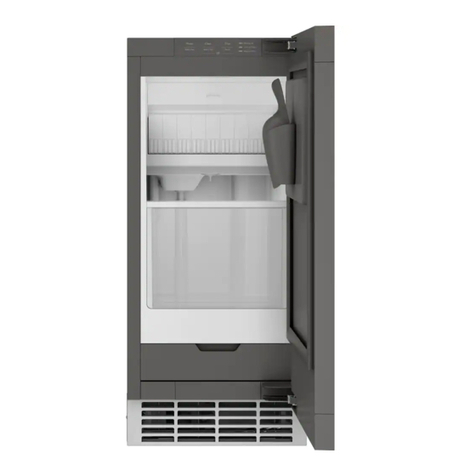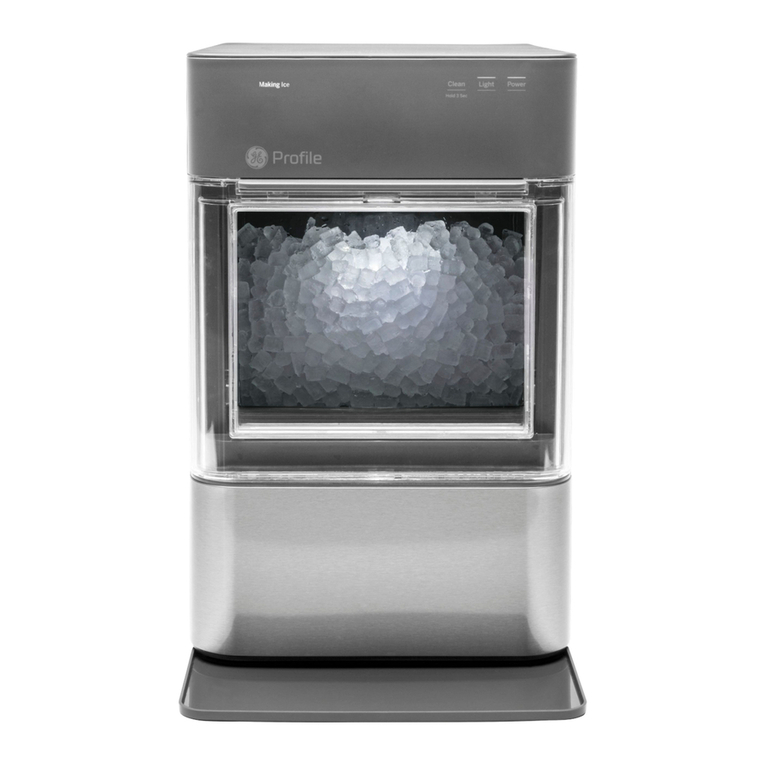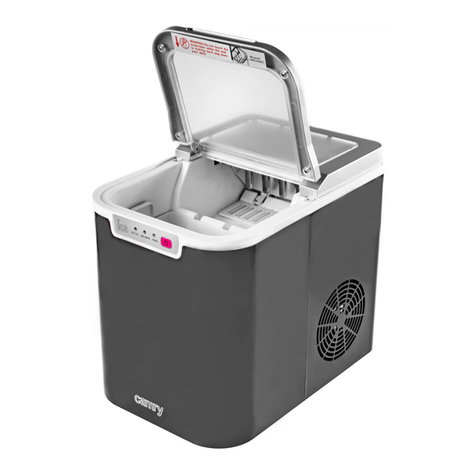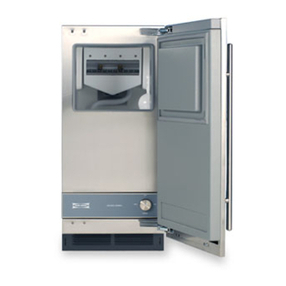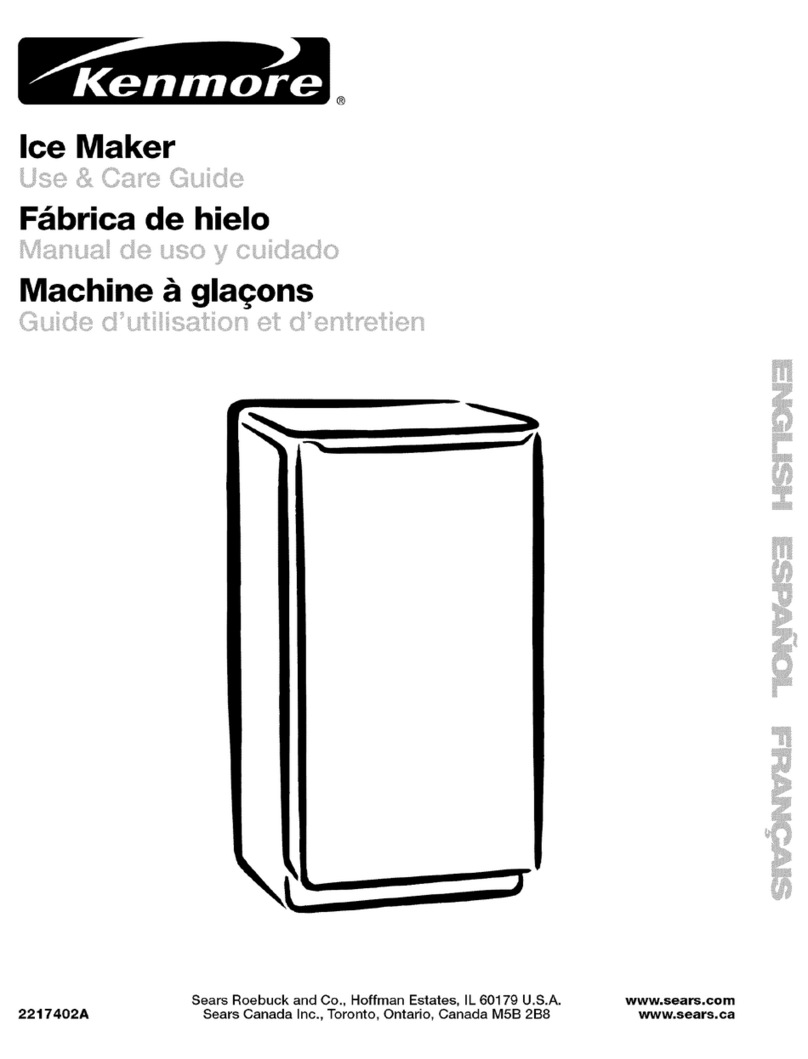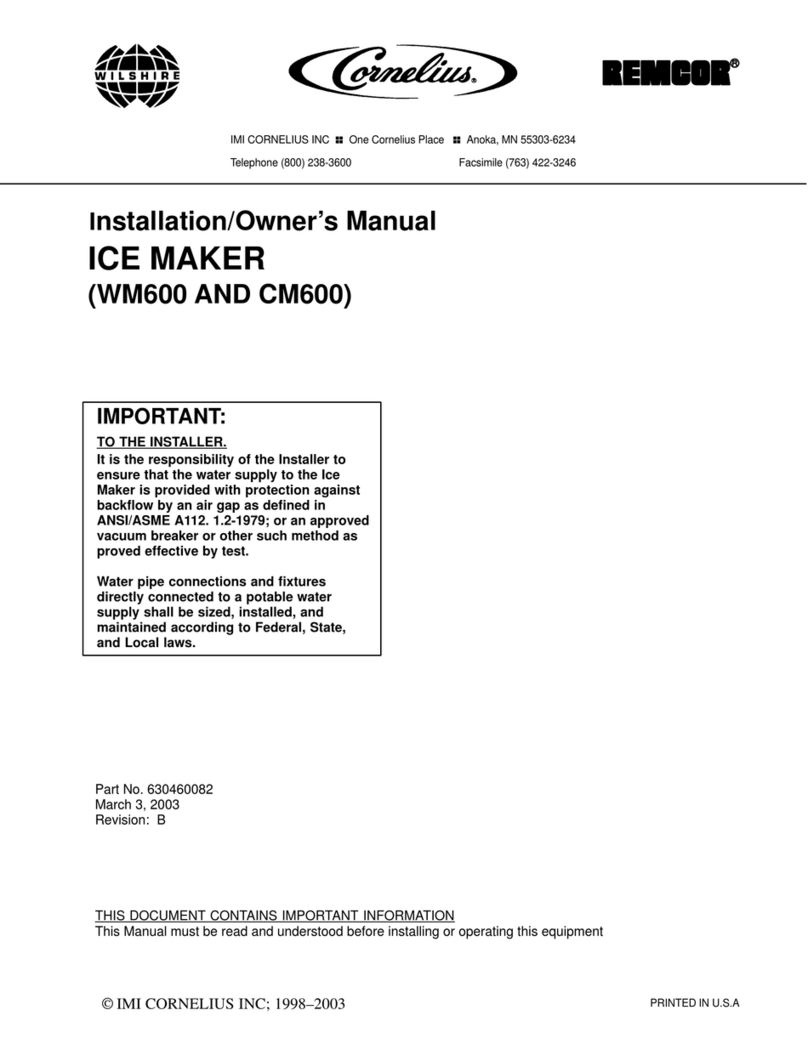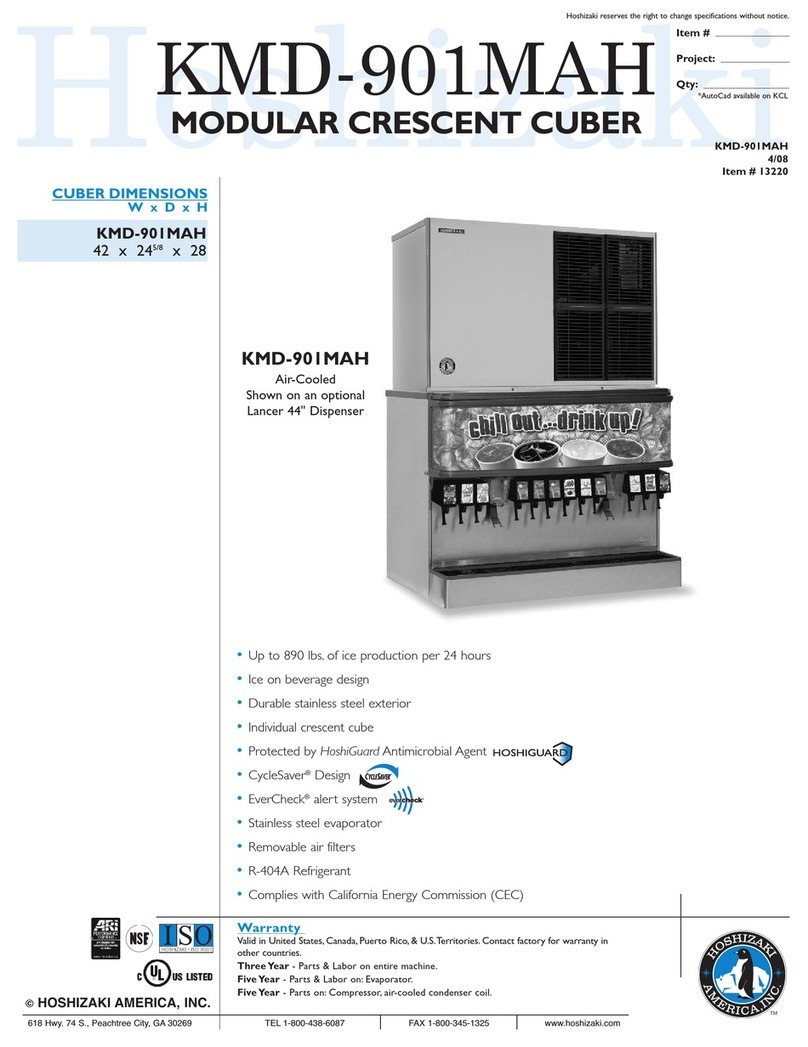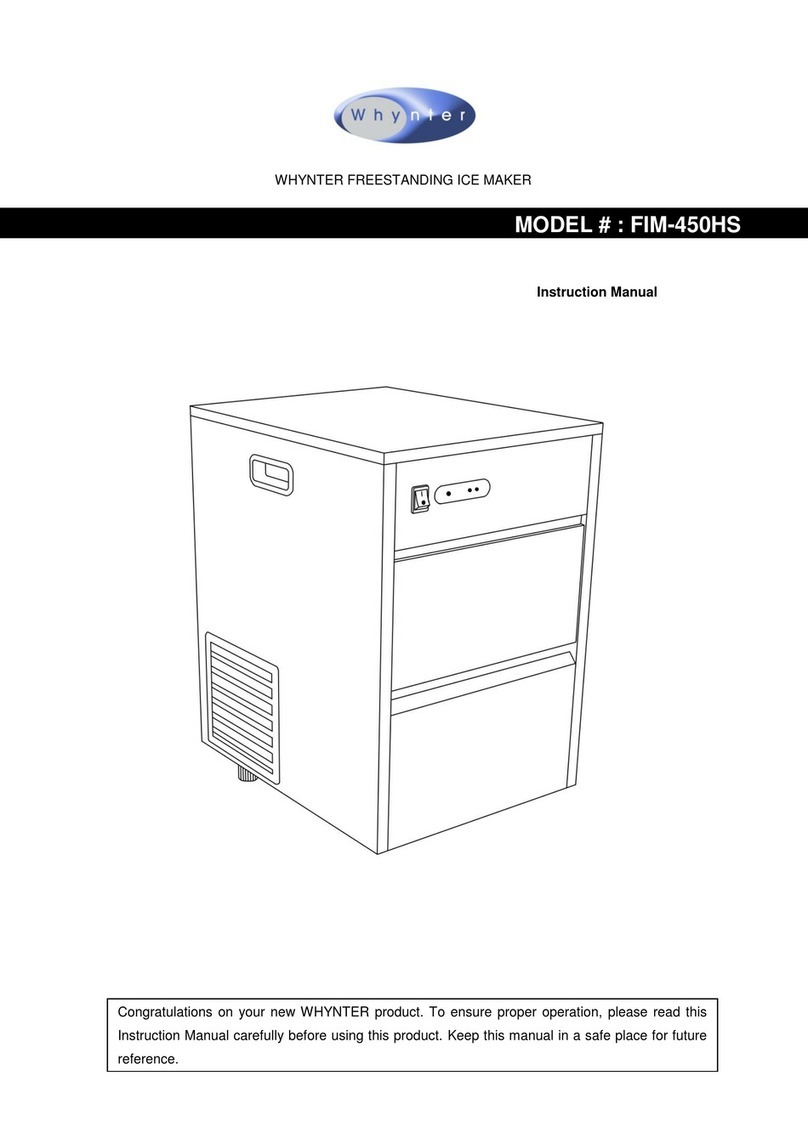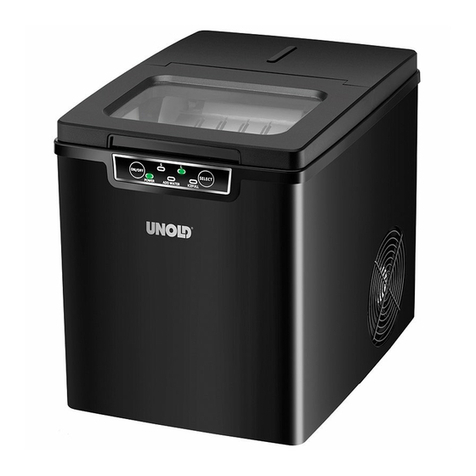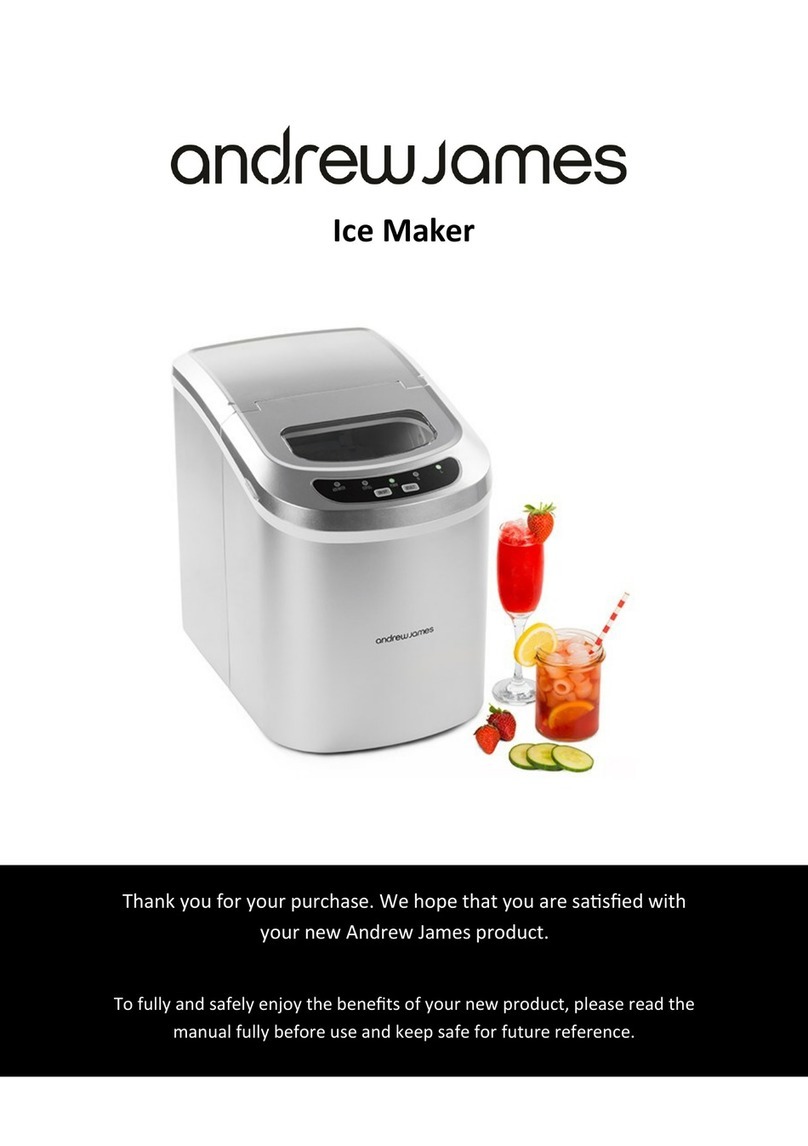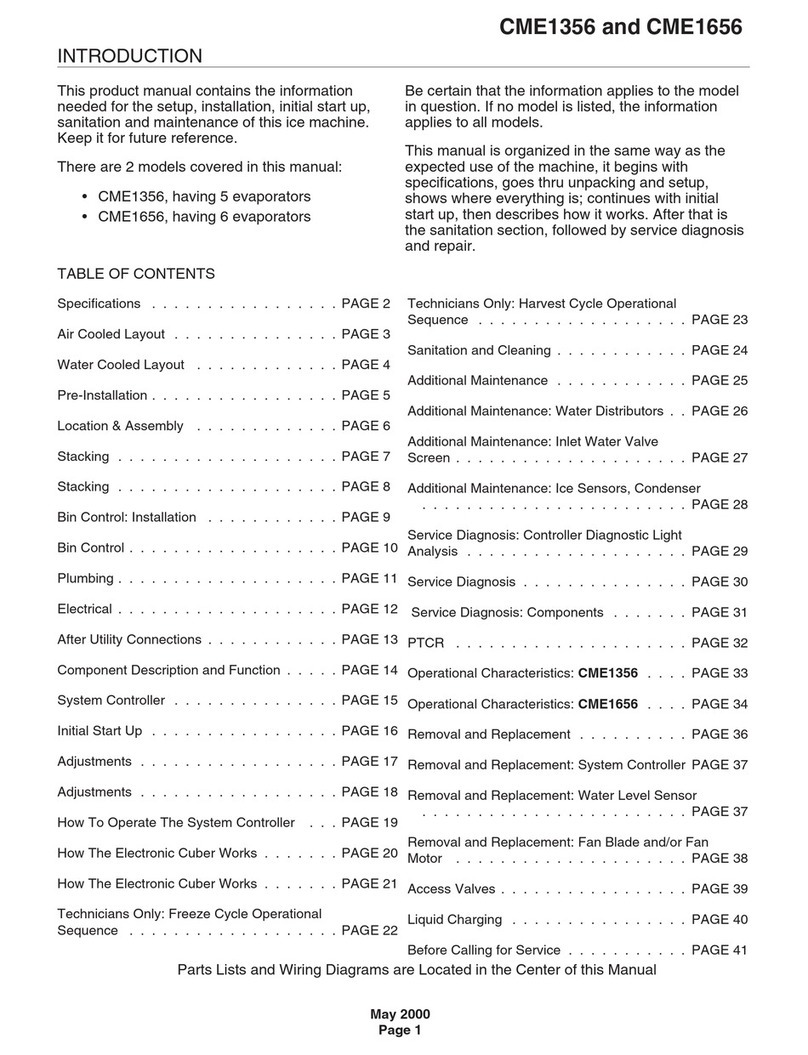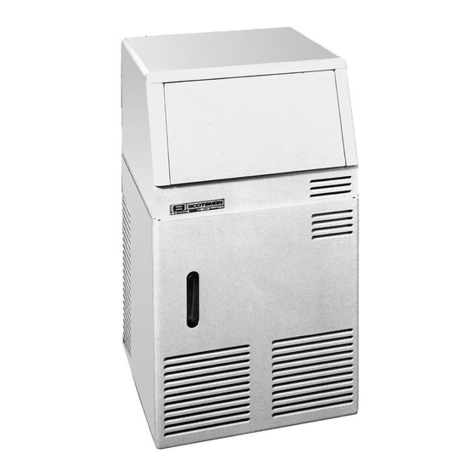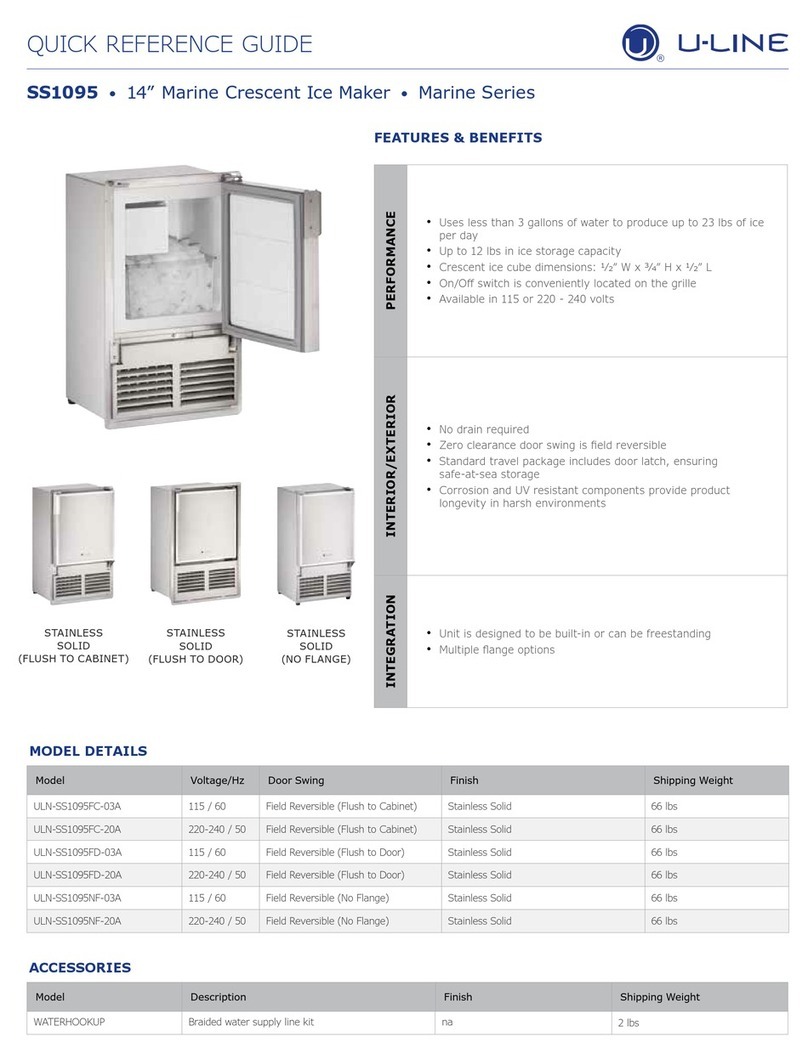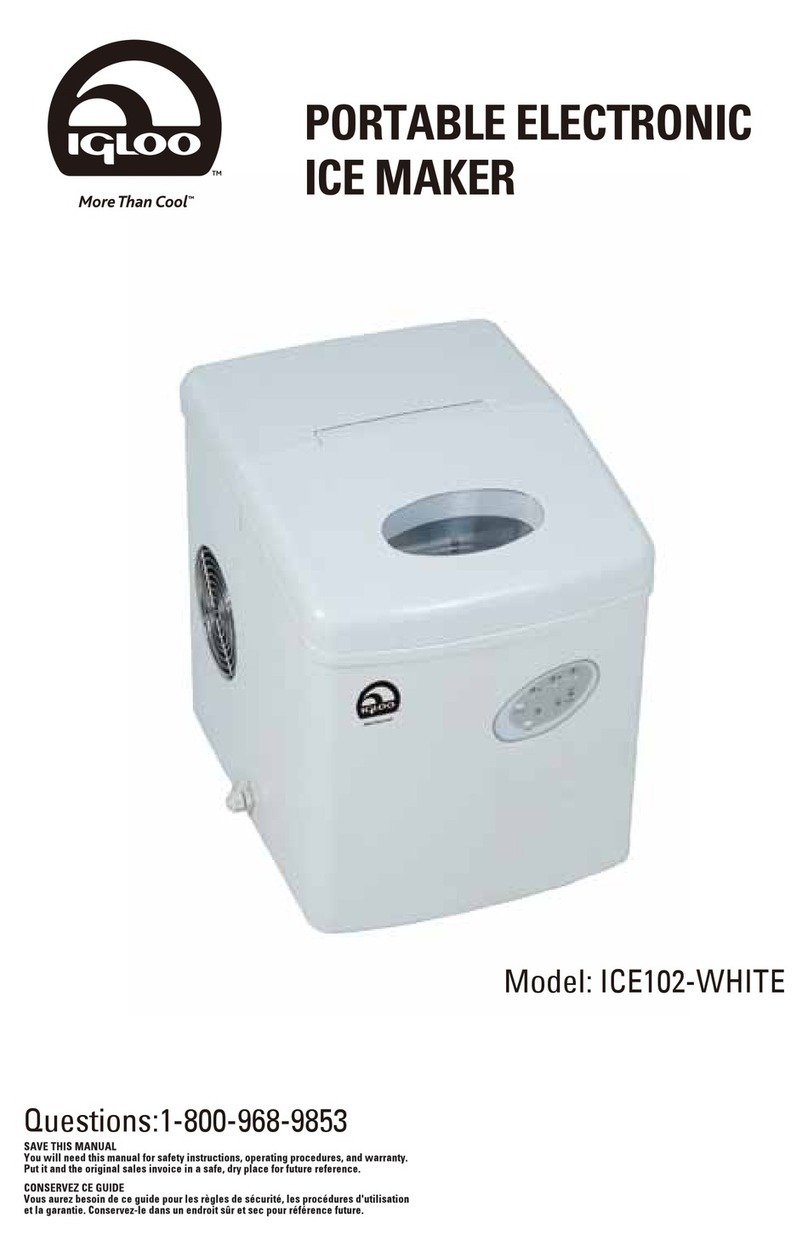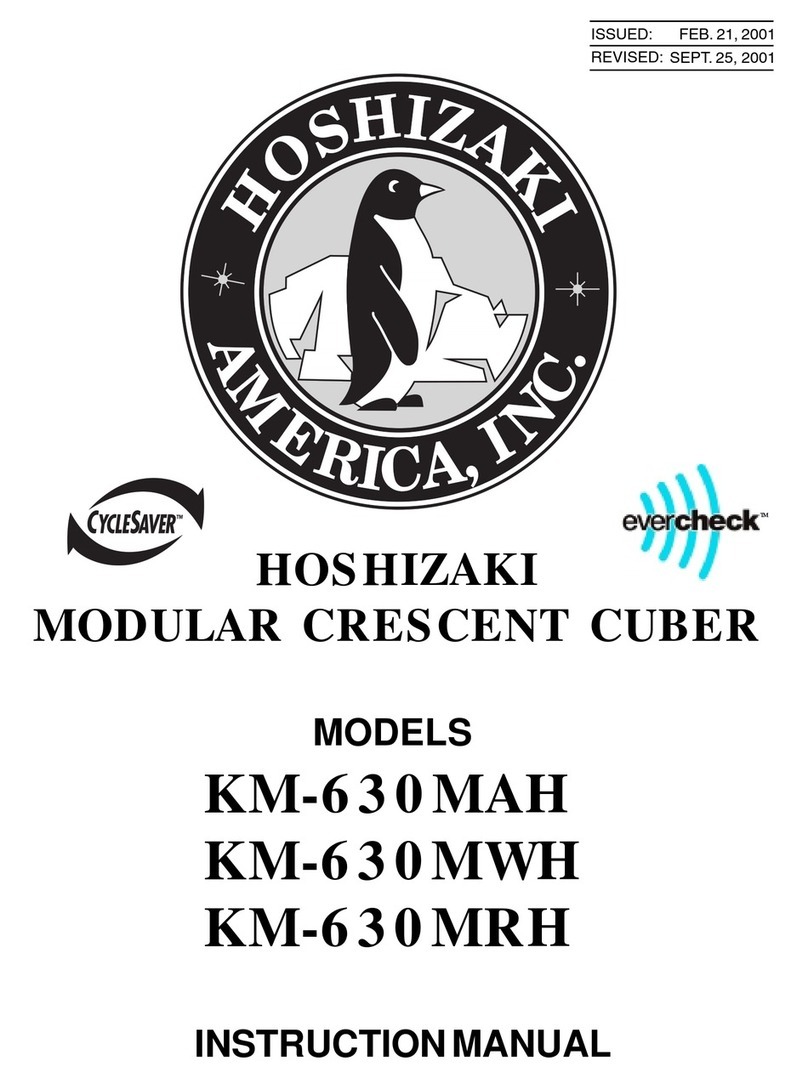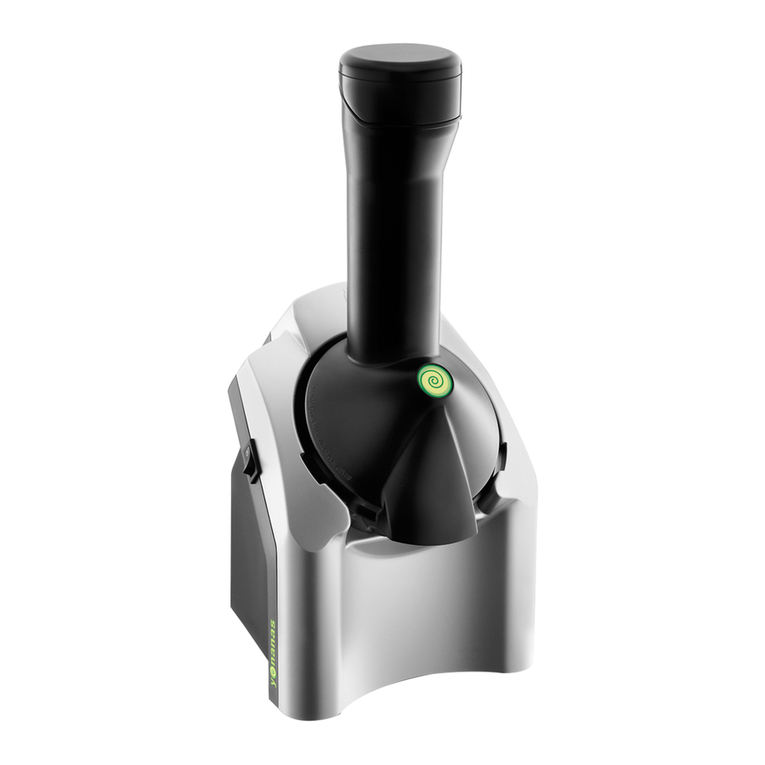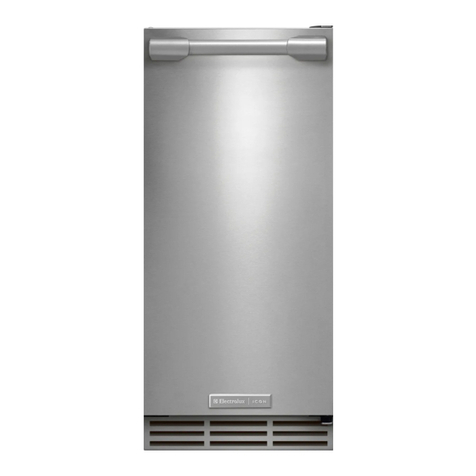
4
3 TIMES WITHIN 15 SECONDS
Thermistor Diagnostics
During icemaker operation, the control
continuouslymonitorsthe thermistorresistance
value. If the thermistor is open or shorted (too
high or too low in resistance), the icemaker will
enter the Fault Mode. When in the fault mode,
the LED will flash at the rate of 1/2 second on
and 1/2 second off.
A temperature of -40°F (-40°C) will be
consideredtoolowandatemperature of 176°F
(80°C) is too high for normal operation to
continue. When out of range, a fault mode will
be entered, yet the thermistor will continue to
be tested. If the reading should later fall within
the valid range, the fault mode will end and the
icemakerwillenterthefreezecycle. Ifthemotor
is not home, the control will restart the harvest
cycle, followed by the freeze cycle, but bypass
the water fill.
Service Diagnostics
During the first 15 seconds that power
is first applied to the icemaker, the Service
Diagnostic Test mode may be entered. The
service mode is entered by pushing the feeler
arm from the “out”position to the “in”position
and back again 3 times
and only 3 times
within
15 seconds.
Note: If the icemaker has already started a
harvest cycle and the arm is moving, it may be
impossible to properly move the arm and enter
the service mode without allowing it to reset
and powering up again.
The service diagnostic mode consists
of a harvest cycle followed by a water fill. The
harvestcycleisenteredimmediately,regardless
of icemaker temperature or arm position.
thefreezecycle. Ifthe temperatureisstill below
39.2°F (4°C) after 15 seconds, the control will
assumeaninsufficient amountofwaterentered
the mold. It will then energize the water valve
againfor2.5seconds,delayfor15secondsand
testagain. Afterthesecond fill, ifthethermistor
is still below 39.2°F (4°C), a third fill for 2.4
secondswilloccur. Thereis amaximumofthree
fills available, at which point the fill cycle will
endandtheicemakerwillenterthe freezecycle.
Nodiagnosticinformation willshowif3fillswere
insufficient to fill the icemaker mold. The table
below shows the possible water fill times:
First Fill 5.1 seconds
Second Fill 2.5 seconds
Third Fill 2.4 seconds
Theabilityof thecontrolto fillupto three
times can compensate for low water pressure
being supplied to the icemaker.
Power On Diagnostics
When the icemaker is first connected
to power and if thermistor temperature is 50°F
(10°C) or higher, the control will perform a
PowerOntestbeforeenteringthefreezecycle.
The test consists of the following:
•Turn on the motor until it reaches home the
next time.
•Turn on the water valve for 1/2 second.
•Turn on the heater for 1/2 second.
•Verify that the feeler arm was in the “in”and
then in the “out”position.
•Verify that the motor was not in the home
position and then in the home position.
•Verify thatthemotor doesnotremainonafter
being turned off.
•Proceed to the freeze cycle.
Note:Thepowerontestwillonlyadd1/2second
of water, which will not overflow the mold with
a normal fill, but may cause a small cube when
the refrigerator is first started.
If the temperature is below 50°F (10°C), the
control will power up normally. If in the home
position, the control will enter the freeze cycle.
If the motor is not home, the control will enter
the harvest cycle but bypass water fill to avoid
overfilling the mold.
